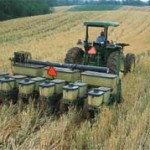By Catherine Haug, Dec 20, 2017 (image right, is from Fairfax County .gov (2))
I’ve never been a fan of fast food, and avoid it. But this news about McDonald’s (from a Mercola article (1)), is good news for the planet.
I’ve written before about regenerative agriculture, and how important it is for the planet, not to mention for our personal health. Now McDonald’s wants to get on the regenerative ag bandwagon with a pilot program to assess the ability of its cattle ranchers to sequester carbon in soil by implementing regenerative grazing practices. If this pilot program is a success, it could give a big boost to regenerative agriculture in general.
Read the Mercola article (1) for more about McDonald’s pilot program. And read on for more about what I believe it involves, and its benefits. (more…)





